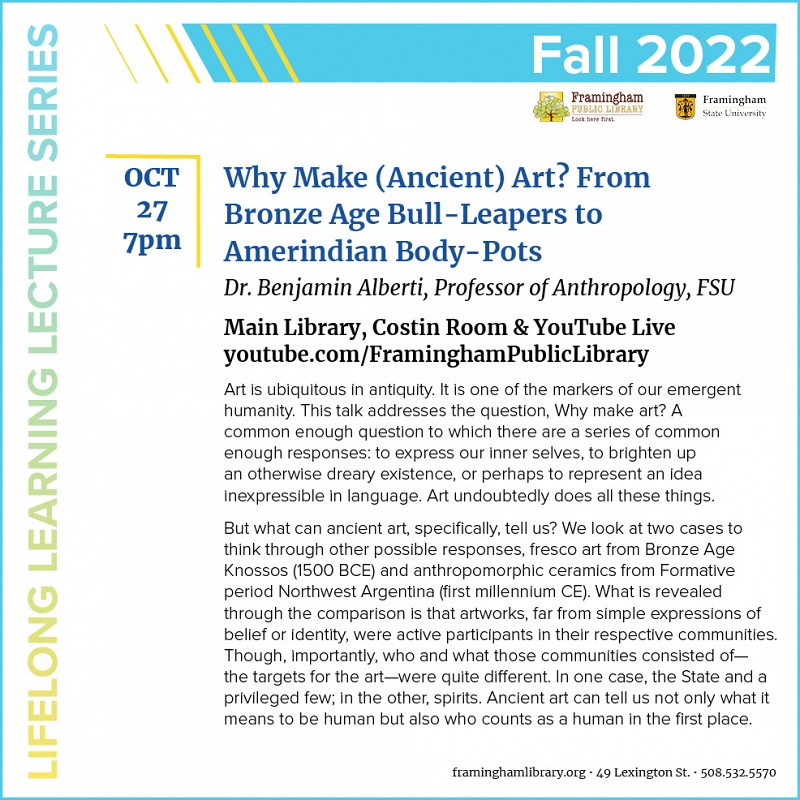Lifelong Learning: “Why Make (Ancient) Art? From Bronze Age Bull-Leapers to Amerindian Body-Pots”

Art is ubiquitous in antiquity. It is one of the markers of our emergent humanity. In this talk, I address the question, Why make art? A common enough question to which there are a series of common enough responses: to express our inner selves, to brighten up an otherwise dreary existence, or perhaps to represent an idea inexpressible in language. Art undoubtedly does all these things. But what can ancient art, specifically, tell us? Here, I take two cases to think through other possible responses, fresco art from Bronze Age Knossos (1500 BCE) and anthropomorphic ceramics from Formative period Northwest Argentina (first millennium CE). What is revealed through the comparison is that artworks, far from simple expressions of belief or identity, were active participants in their respective communities. Though, importantly, who and what those communities consisted of – the targets for the art – were quite different. In the one case, the State and a privileged few; in the other, spirits. Ancient art, it turns out, can tell us not only what it means to be human but also who counts as a human in the first place.
Youtube: https://www.youtube.com/c/FraminghamPublicLibrary.
Dr. Benjamin Alberti, Professor of Anthropology, Framingham State University.
